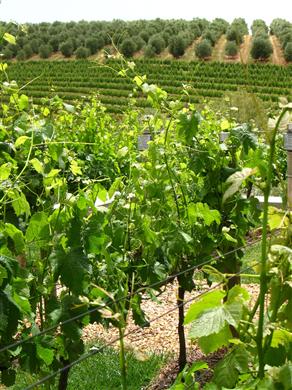Box: Definitions
Virtual Water is the volume of water used to produce a commodity.
Source: Hoekstra and Chapagain, 2008
A country's Water Footprint is the amount of water embodied in the goods it imports and exports.
Source: Lange and Hassan 2006
The concept of virtual water was first introduced by Tony Allan from King’s College in London in the early nineties. It took nearly a decade for policy makers and academics to recognise its importance; it was first discussed internationally in 2002 in Delft and then at the Third World Water Forum in Japan in March 2003. The concept continues to be debated worldwide.

Virtual Water considers every use of water needed to reach the final product.
Source:Vilseskogen 2008
( click to enlarge )
Trade in Virtual Water
Transfer of water between countries via large transfer schemes has numerous drawbacks including high construction and operational costs, loss of water through evapotranspiration in semi-arid regions, and environmental consequences including the potential for the transfer of alien invasive species between countries (particularly aquatic weeds and fish species) (Earle and Turton 2003). Furthermore, political insecurity can arise when a water-scarce country depends on a water-abundant country for critical water supply because if there is conflict between the countries the flow of water can be stopped. Conversely, when the water-abundant country depends on the water-scarce country for its export revenue the importing country has a certain amount of sway over the exporting country.
Arguably, a better alternative is trade in virtual water. Trading water-intensive products from water-abundant countries to water-scarce countries provides the same benefit without the drawbacks of large transfer schemes (Earle and Turton 2003). Essentially, if a country imports goods that would otherwise use a lot of its scarce water to produce, the demand on its own water supplies is lessened.
In this view, products are said to "contain" virtual water—the water used in their creation (Allan 1998). For example 1 kg of grain needs 1 000–2 000 kg of water to grow, and 1 kg of beef requires much more—an average of 16 000 kg. Virtual water quantification is not restricted to growing crops or livestock; a 32-megabyte computer chip that weighs 2 g requires an estimated 32 kg of water to manufacture (Williams et al. 2002; Hoekstra 2003).
Water Footprint
The Water footprint concept was first introduced by Hoekstra in 2002 and it takes into account the water needed to create a product or commodity (Kort 2010). In this regard the definition is similar to the virtual water content; however, the water footprint can be applied more broadly to the water consumed by people or businesses, and it has dimension of location and time associated with it. The water footprint considers where the water has come from, when it was used, and more recently has started to also differentiate between the kinds of water used (green, blue or grey water) (Water Footprint Network 2010).
